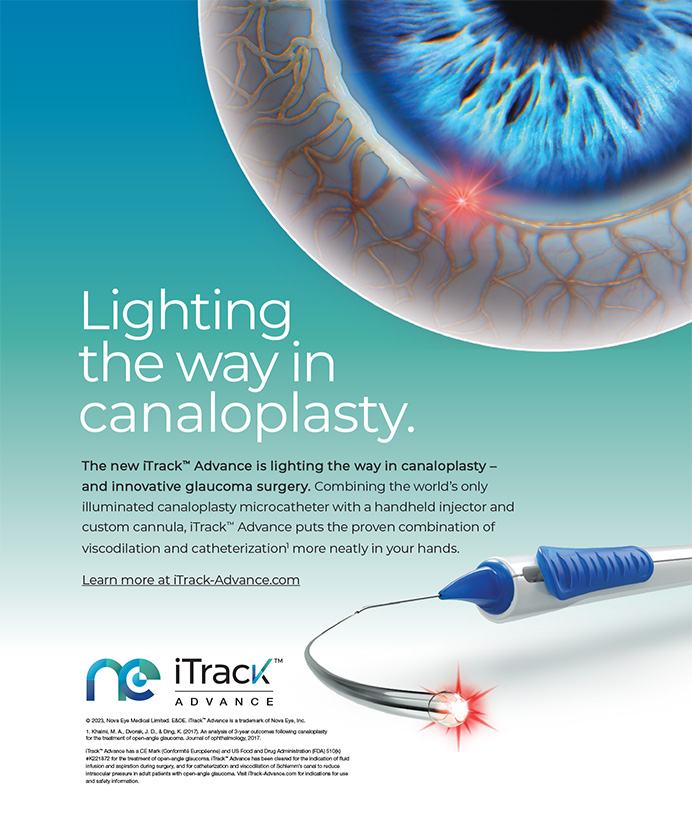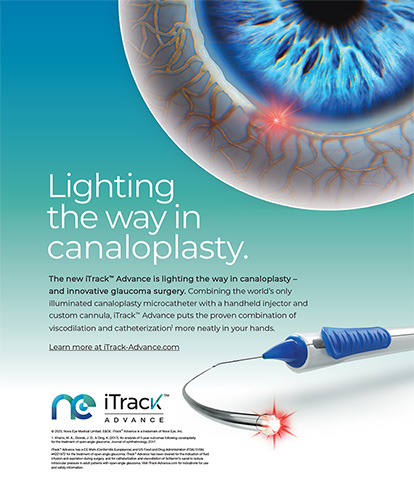In our lives, careers, and families, we have all learned through experience that the details matter. Oftentimes, we reminisce about and cherish these delectable morsels, but they sometimes place us in a predicament. In that vein, this month’s selection of videos testifies to the importance of details in ophthalmic surgery. The videos provide instructions on the cataract incision’s creation, innovative techniques to improve its closure, strategic preoperative and intraoperative strategies for managing a challenging case of an intralenticular foreign body, and ideas to assist us when things go wrong, with specific regard to the posterior capsule.
TESTING CLEAR CORNEAL INCISIONS’ INTEGRITY IN A HUMAN CADAVERIC EYE
Although most of us have confidence in the construction of our wounds during cataract surgery, images from the India ink study from Peter J. McDonnell, MD, resonate with most of us. In a similar fashion, John Hovanesian, MD, demonstrates the ingress and egress of India ink through a clear corneal incision in a cadaveric eye. He then proceeds to demonstrate the use of ReSure Adherent Ocular Bandage (Ocular Therapeutix, Bedford, MA), a polymerizing liquid hydrogel ocular bandage, in an effort to enhance the closure of clear corneal incisions and prevent fluid ingress and egress through the wound (Figure 1) (http://eyetube.net/?v=dikivi).
REMOVAL OF AN INTRALENTICULAR FOREIGN BODY
The attention to detail in our preoperative evaluations of surgical patients enhances our intraoperative strategies. John Hofbauer, MD, presents a case of a metallic foreign body that has perforated through the anterior capsule and become lodged in the lenticular material. His use of VisionBlue (Dutch Ophthalmic Research Company, Zuidland, The Netherlands) and creation of a large capsulorhexis that encompasses the anterior capsular perforation are shown. Additionally, Dr. Hofbauer demonstrates extraordinary attention to detail with careful hydrodelineation and meticulous viscodissection of lenticular material surrounding the foreign body. He takes particular care not to exert posterior pressure, because the status of the posterior capsule is unknown. He then removes the foreign body with a grasping intraocular foreign body forceps, after which he performs cortical cleanup. Although the posterior capsule is found to be intact at the conclusion of the case, the unknown status of the capsule at the start drove Dr. Hofbauer’s intraoperative strategy for ensuring the safest outcome possible for this patient (Figure 2) (http://eyetube.net/?v=pichi).
POSTERIOR CAPSULAR RUPTURE
Saving the Day: HEMA Lifeboat
It has happened to all of us. Posterior capsular rupture will continue to top the list of complications that we anterior segment surgeons want to avoid. However, when it does occur, how we proceed can affect the patient’s ultimate prognosis. In their video, Keiki Mehta, MD, and Cyres Mehta, MD, encounter a ruptured posterior capsule while nuclear fragments are still in the anterior chamber and iris plane. They demonstrate the use of their HEMA “lifeboat,” which is made of pure HEMA and has thick edges circumferentially, a thin center, and a 9.5-mm diameter. The device is loaded into a standard, folding lens injector. Following the injection of viscoelastic into the anterior chamber, the lifeboat is injected into the peripheral portion of the anterior chamber, in front of the iris plane, and then carefully unfolded so that it lies below the remaining nuclear fragments and acts as a “life raft” for them. The surgeons carefully move these fragments onto the lifeboat. They then proceed with phacoemulsification but with careful attention to fluidics and minimal ultrasound power (Figure 3) (http://eyetube.net/?v=pumege).
Staining the Vitreous
After identifying a torn posterior capsule, the surgeon must determine the extent to which vitreous is involved. This includes how far it has extended through the capsular break as well as the amount and location of vitreous strands in the anterior chamber, wound, and paracentesis. Abhay Vasavada, MD, FRCS, and colleagues demonstrate a method of visualizing vitreous after a posterior capsular rupture. They use 40 mg/mL of preservative-free triamcinolone acetate, which they dilute to a concentration of 4 mg/mL. A few cases demonstrating the enhanced visualization of vitreous strands using triamcinolone are shown (Figure 4) (http://eyetube.net/?v=temizi).
Visco-Trap
David Chang, MD, demonstrates the use of a Sheets glide as an artificial posterior capsule after a posterior capsular rupture. He notes the importance of monitoring fluidics and phaco settings. Dr. Chang uses generous amounts of a dispersive viscoelastic delivered through the pars plana in order to trap remaining lenticular fragments (http://eyetube.net/?v=nobipp).
Understanding the Dropped Nucleus
Why does the nucleus fall posteriorly after a tear in the posterior capsule?
Robert Osher, MD, and James Osher, MD, present a wonderfully educational video examining different hypotheses on this phenomenon, including gravity, bottle height, IOP, pressure gradients, mechanical forces, anterior chamber fluctuation or surge, turbulence, and the role of the vitreous (http://eyetube.net/?v=seredd).
CONCLUSION
The videos described herein provide tips or tricks for fine-tuning our surgical procedures or enhancing our ability to handle an unexpected complication such as a ruptured posterior capsule. Regardless of our skill level, these videos should help us to provide superior surgical results in both standard and challenging cases. Yes, the details matter!
Section Editor Richard M. Awdeh, MD, is the director of technology transfer and innovation and an assistant professor of ophthalmology at the Bascom Palmer Eye Institute in Miami. He acknowledged no financial interest in the products or companies mentioned herein. Dr. Awdeh may be reached at (305) 326-6000; rawdeh@med.miami.edu.
Section Editor William B. Trattler, MD, is the director of cornea at the Center for Excellence in Eye Care in Miami and the chief medical editor of Eyetube.net He acknowledged no financial interest in the products or companies mentioned herein. Dr. Trattler may be reached at (305) 598-2020; wtrattler@earthlink.net.


